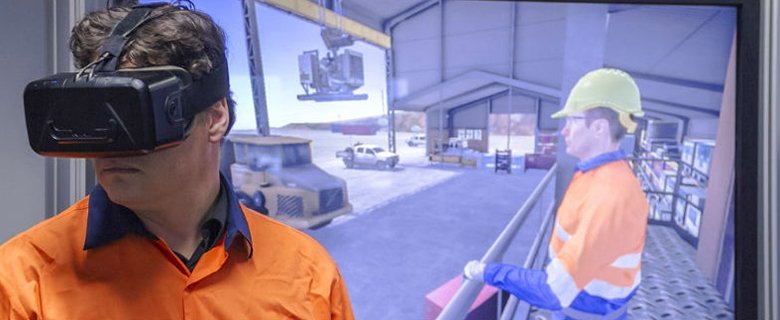It shouldn’t come as a surprise that US occupations deemed ‘most dangerous’ by USA Today fall predominantly under the industrial utility sector. Treacherous conditions, heavy machinery, exposure to harmful substances and electrical currents are just some of the reasons these industries are prone to accidents and fatalities.
The Occupational Safety and Health Act has improved workplace standards leaps and bounds since its inception in 1970. While it is credited with reducing workplace fatalities by 63%, US workers suffer serious injury and risk their lives due to the inherent dangers of their workplace. We identified high risk jobs, using USA Today’s Top 25 most dangerous in America list, and aligned them with XR Technology that can improve their safety conditions/procedures. What is XR? XR, or extended reality, is the umbrella category that covers all the various forms of computer-altered reality, including Augmented Reality (AR) and Virtual Reality (VR).
Here is how our modernized technology can close the gap and further diminish the risks posed by dangerous occupations:
Virtual Reality Preparedness with Hazardous Environmental Factors
Rank #22 Electricians – 79 fatal injuries, 7,790 nonfatal injuries
Rank #2 Fishers and related fishing workers
Rank #1 Logging Workers – 91 fatal injuries, 900 nonfatal injuries
The commonality between fishermen, loggers and electricians is that all three are subjected to extremely hazardous working environments. Without adequate training, these hazards can be life-threatening. These industries rely on training material such as instructional guidelines, classes, test taking and role-playing to prepare employees. Replicating dangerous and extraordinary situations for training is extremely difficult, if not impossible.
Virtual Reality offers a radically different approach by fully immersing users into a dynamic, virtual environment where these dangerous conditions can be simulated. By simulating the most high-risk situations within a controlled environment, workers are equipped with a mental readiness that can only be achieved from first-hand experience. This exposure promotes good decisions in extraordinary situations. According to Deloitte Insights, when comparing VR’s effectiveness compared to traditional methods, studies show a reduction in learning time, decrease in training errors, increase in knowledge absorption & retention.

Augmented Reality Mitigates Fatal Mistakes
Rank #25 Heating, AC and Refrigeration Mechanics and Installers – 37 fatal injuries, 6,830 nonfatal injuries
Rank #23 Industrial Machinery Installation, Repair & Maintenance Workers – 45 fatal injuries, 4,490 nonfatal injuries
Rank #15 Electrical power-line installers and repairers – 21 fatal injuries, 1,710 nonfatal injuries
Common accidents for these roles include electrical shocks, falls, and burns. While these workers are required to follow safety precautions and wear protective equipment such as hardhats, safety glasses, and steel-toed shoes they are still at risk for dangerous working conditions. Extreme heights, uncomfortable and cramped positions for extended periods plus exposure to electrical currents and damaged machinery, leave workers vulnerable to risk.
How can AR, Augmented Reality, solve for these issues? AR is the combination of real-world and computer-generated perceptual information. The “lens” of wearables or AR-enabled devices are necessary for experiencing this combined reality. Digital overlays, adding digital elements and information to real-world settings, and relaying live feeds to remote teams and central data capture locations are arguably the most beneficial features of AR for Industrial Utilities.
The digital overlays provide better visualization of the asset’s complex components and enables relevant data to appear for the technician to reference, including safety notifications and workflow instructions. GE Renewable Energy has improved technician assembly time efficiency by 34% using smart glasses overlaid with digital instructions. The live feed is useful because in real-time, the video stream can be accessed by a remote expert that can aid the technician in executing the repair or installation.
These jobs will always have risks involved, but XR technologies are paving the way to smarter and safer training. Arm field technicians with “experience” through means of virtual reality and provide AR-enabled devices that can aid workers on-site to further improve safety measures.
Want to learn more about incorporating XR into your strategy? Reach out to our team at CodeTank Labs here.
Written by Lauren McNamara @ CodeTank Labs.
Sources: DeMarinis, Tony, Cary Harr, Lynne Calligaro, and Joe Mariani. “Real Learning in a Virtual World How VR Can Improve Learning and Training Outcomes.” Deloitte Insights. August 14, 2018. Accessed January 30, 2019. https://www2.deloitte.com/insights/us/en/industry/technology/how-vr-training-learning-can-improve-outcomes.html.
Stebbins, Samuel, Evan Comen, and Charles Stockdale. “Workplace Fatalities: 25 Most Dangerous Jobs in America.” USA TODAY: Money. January 9, 2018. Accessed January 30, 2019. https://www.usatoday.com/story/money/careers/2018/01/09/workplace-fatalities-25-most-dangerous-jobs-america/1002500001/.
